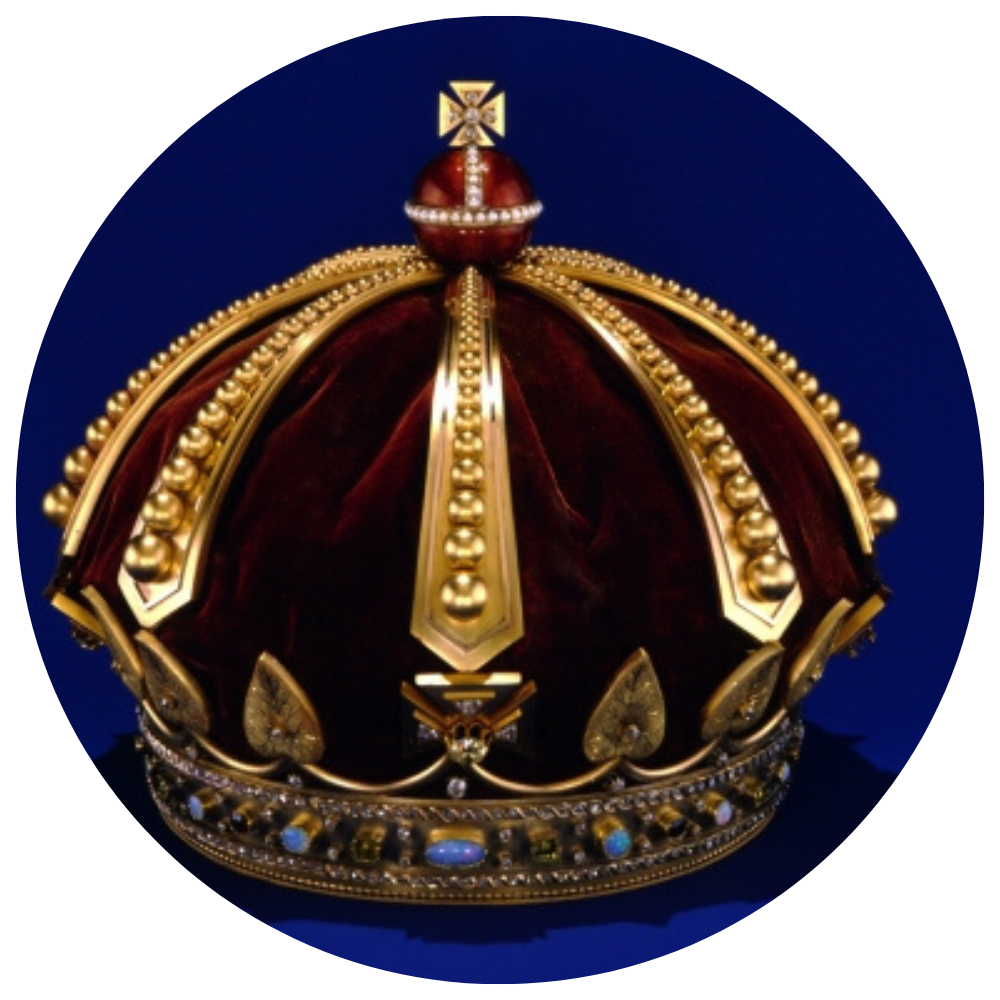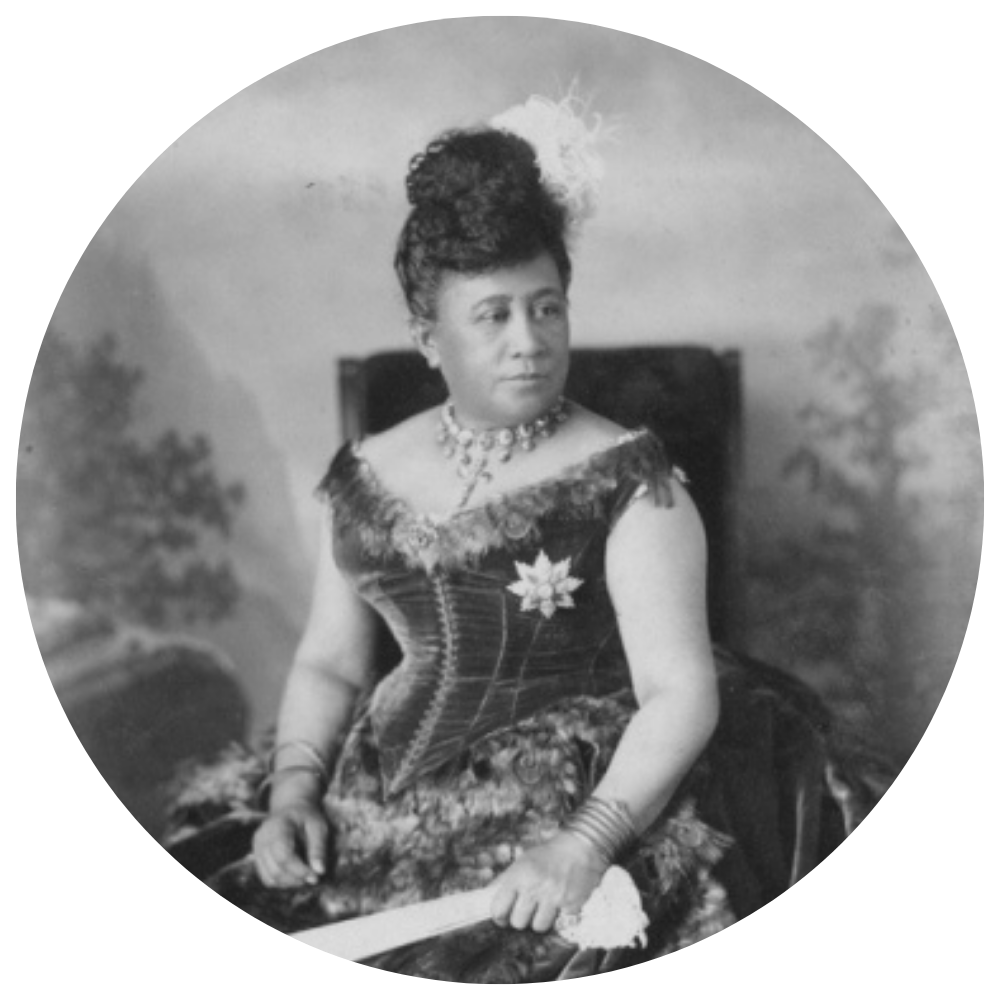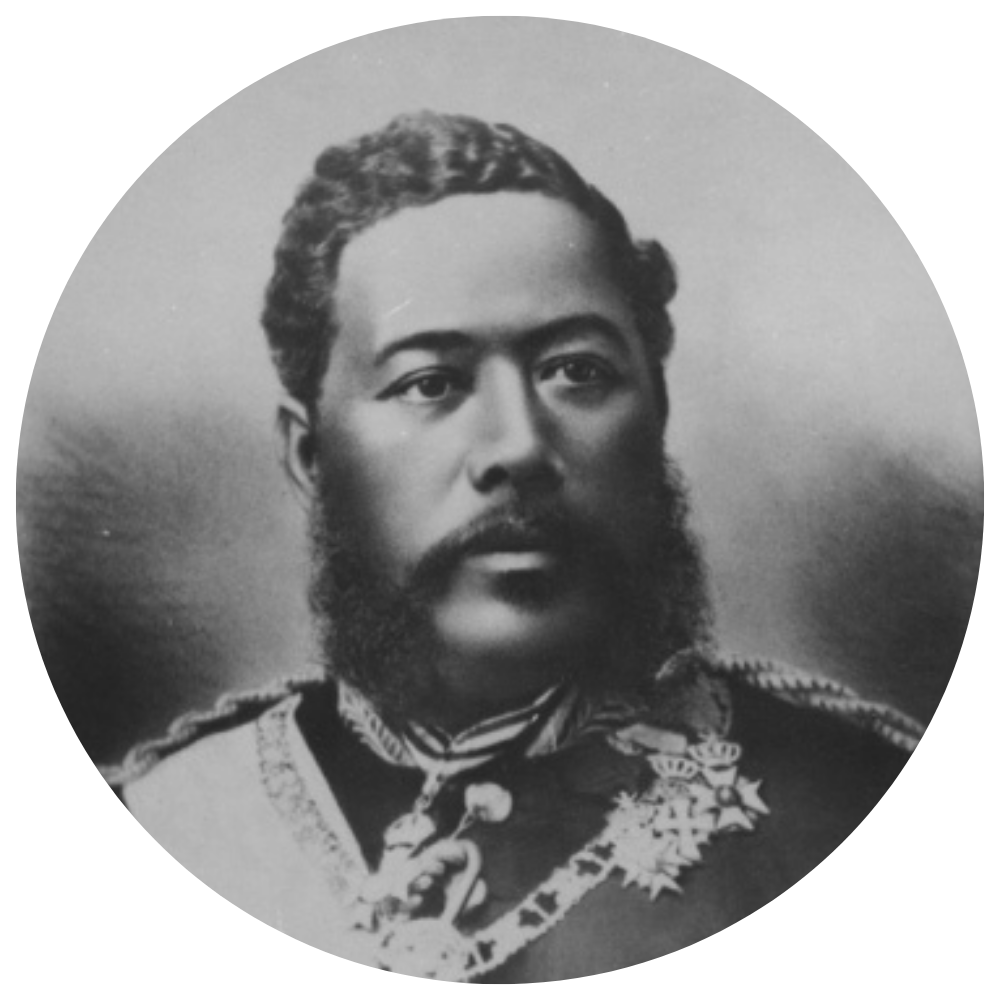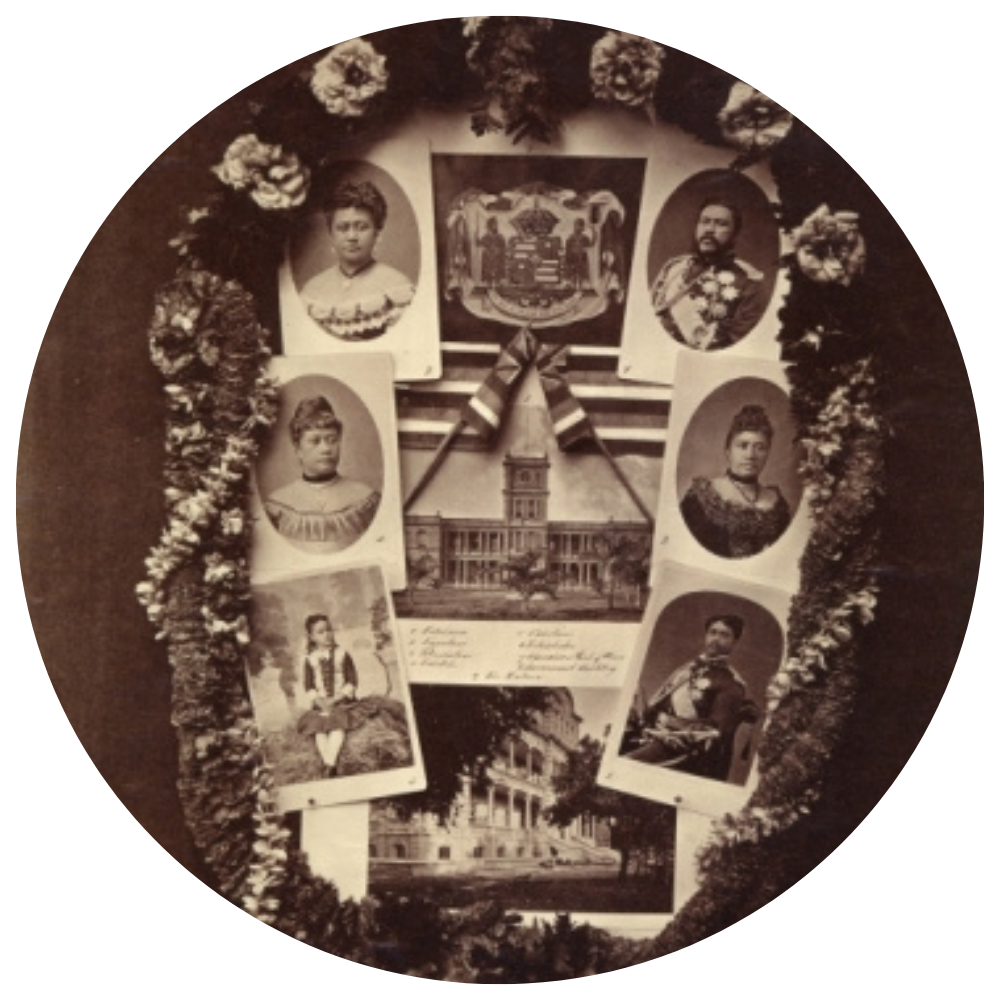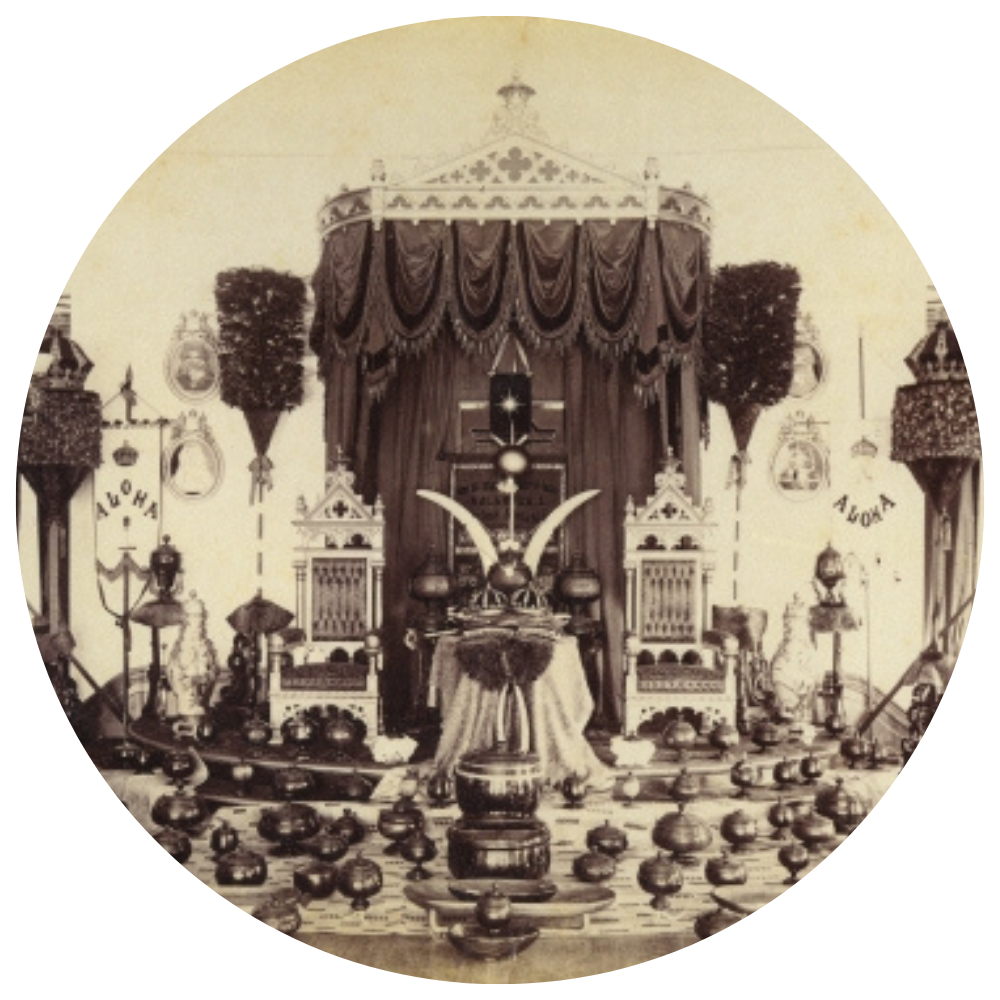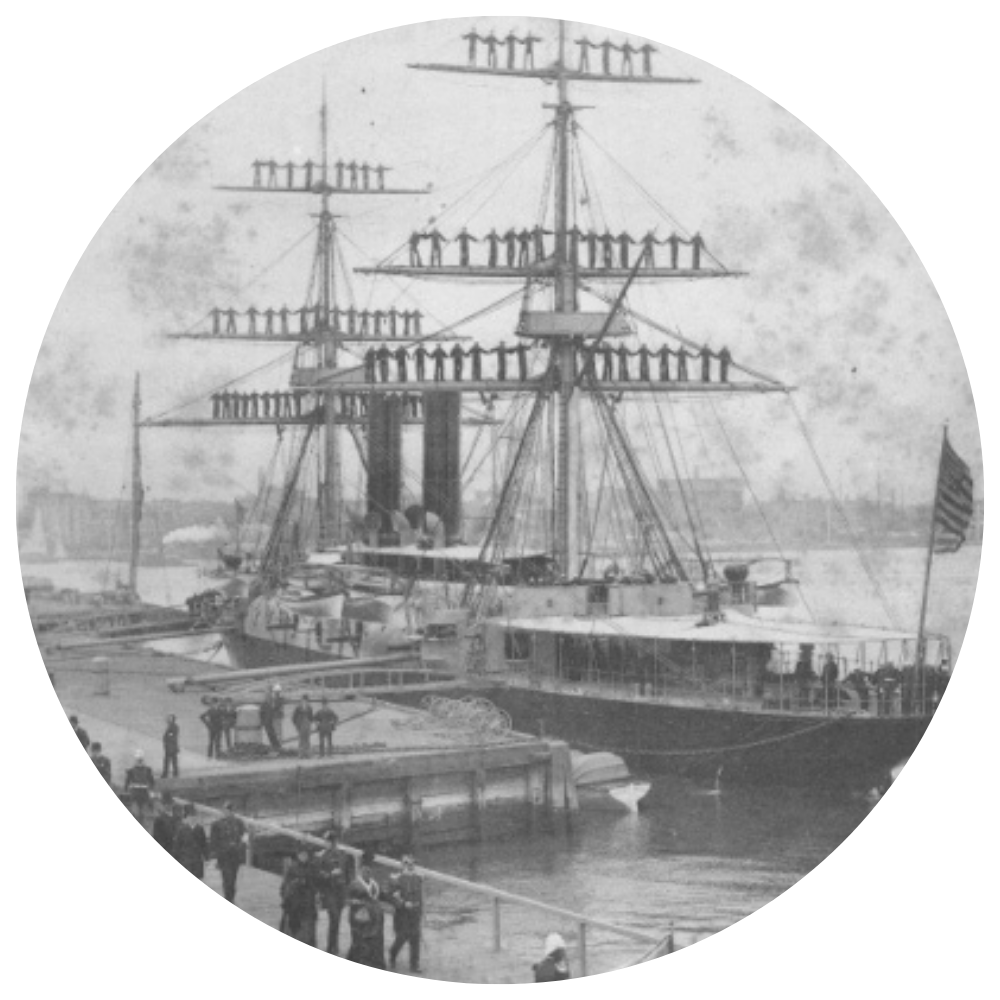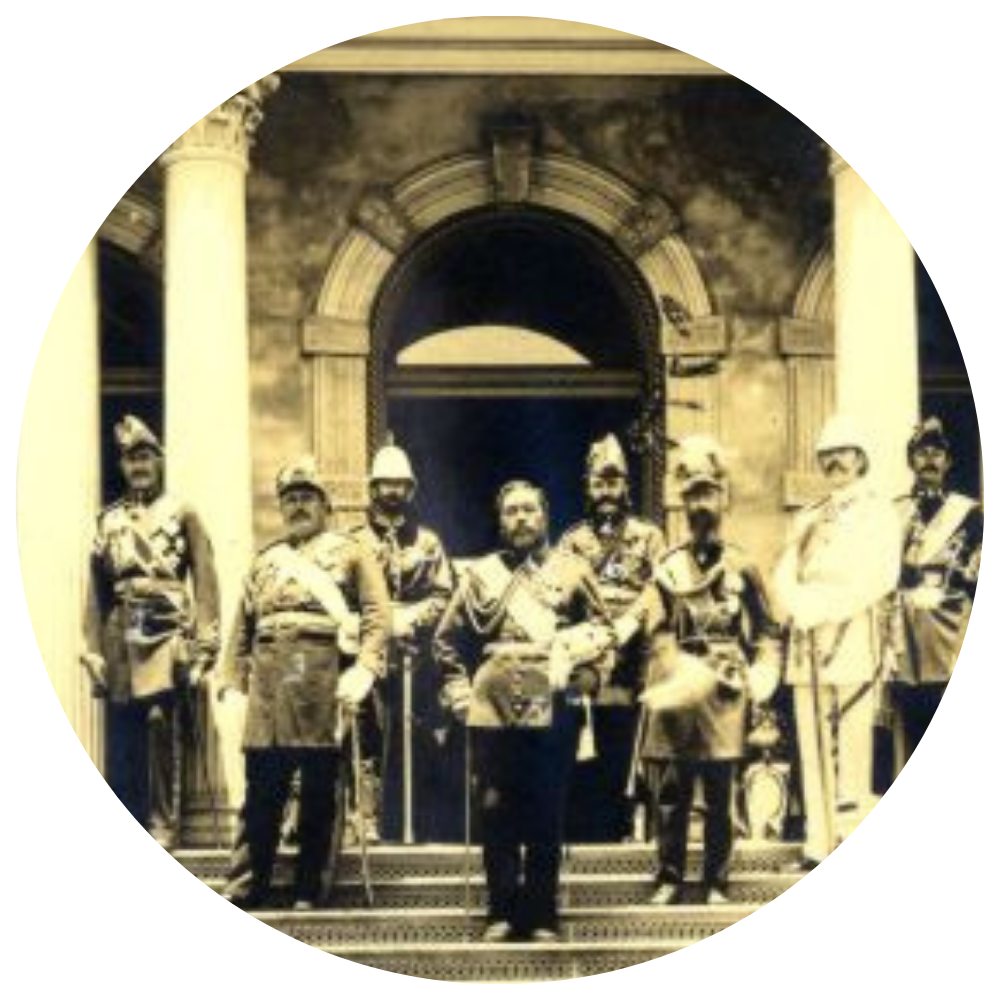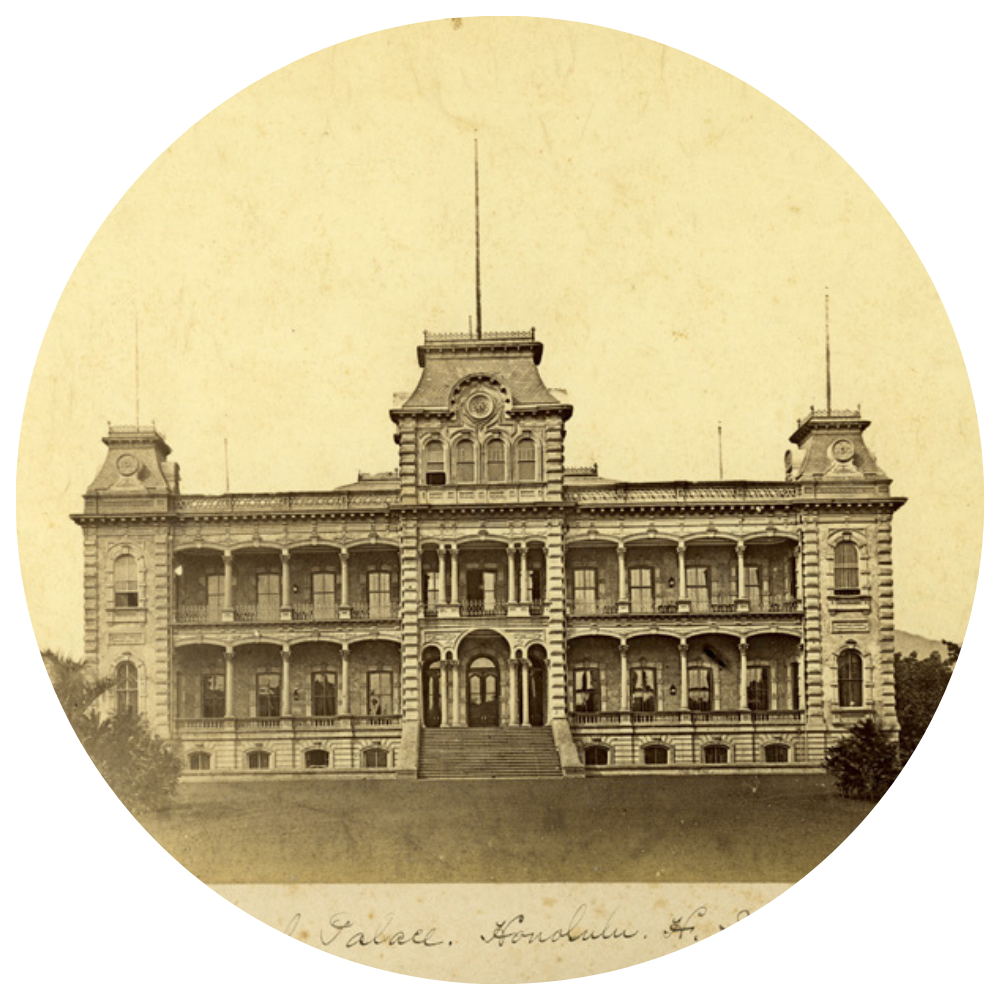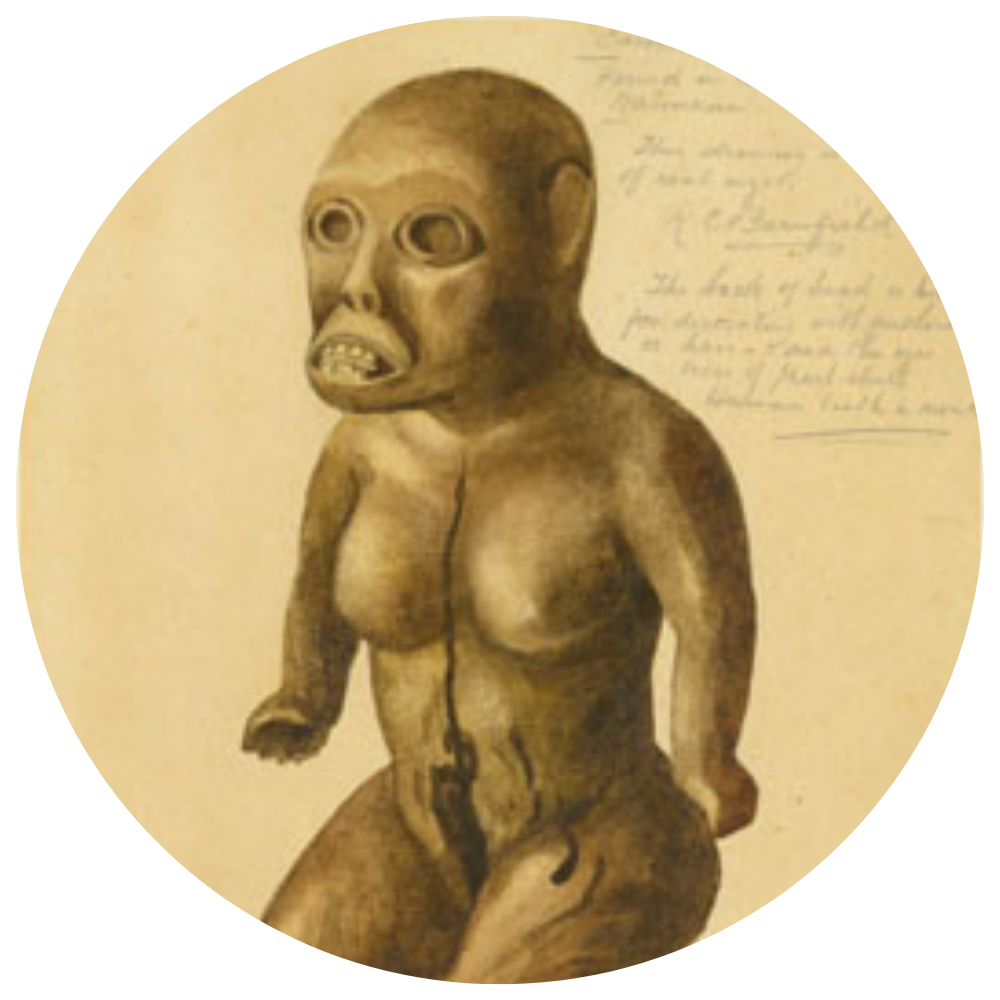Gown of Princess Liliʻuokalani

Gown worn by Princess Lili‘uokalani at the coronation of her brother King David Kalākaua
On February 12, 1883 one of the most grand and regal events ever witnessed in Hawai‘i was held at the recently completed ‘Iolani Palace in Honolulu. Nine years to the day after his election as Mō‘ī, David Laʻamea Kamanakapu‘u Mahinulani Naloiaehuokalani Lumialani Kalākaua was crowned in a majestic coronation ceremony. While some called this event an ill-timed extravagance, the Mō‘ī saw it as a much-needed part of his efforts to revive Hawaiian patriotism and re-present the Hawaiian Kingdom to the world. In his proposal for funding included in the 1880 Coronation Act, the Foreign Minister of the Hawaiian Kingdom stated
“You Hawaiians, in crowning your King, will raise up your nation before the eyes of the world…and you will make a solemn appeal to the great powers of the earth for the perpetual guarantee of your independence.”*
Kalākaua, recently returned from his diplomatic mission around the world, was now working to strengthen his position through the type of state pageantry and rhetoric that he had seen used so effectively by world leaders like Queen Victoria of England and the Emperor Meiji of Japan. This coronation was a statement to the world about the legitimacy of the Kingdom of Hawai‘i.
The King had gained the backing of sugar barons and American business interests by his support of the Treaty of Reciprocity with the United States, which greatly expanded sugar profits. These same interests had also gained significant political power within the kingdom. Now however, they were becoming uncomfortable with the King’s more recent efforts to revitalize, both culturally and politically, the Native population. Kalākaua made a strong anti-mission statement by his purposeful inclusion of an extended program of hula held for the coronation. The Native dance had been forcefully attacked as a debauched and sinfully vile remnant of earlier, unenlightened days. After the coronation the printer of the program describing the hula was arrested for printing obscene materials.
Viewed as a diplomatic statement, many saw the two weeks of events held around the coronation as a success. A detailed description of the coronation ceremony itself reports over seven thousand attendees headed by delegations from countries around the world. Mele Inoa, honorific name chants, representing each island were composed for both Kalākaua and Queen Kapi‘olani. Princess Lili‘uokalani, sister of the King, rebuffed criticism of the expense of the event by writing that the coronation gave to the people “a renewed sense of the dignity and honor involved in their nationality…” and that “It was wise and patriotic to spend money to awaken in the people a national pride.”**
The dress she wore to the coronation was commissioned by the Princess from a Parisian dressmaker for this historic day.
*Coronation of Their Majesties The King and Queen of the Hawaiian Islands, at Honolulu, Monday, February 12th, 1883. Bishop Museum Library; DU Hist 47.
** Lili‘uokalani. Hawaii’s Story by Hawaii’s Queen. 1991, p104-105.
Location: Bishop Museum


